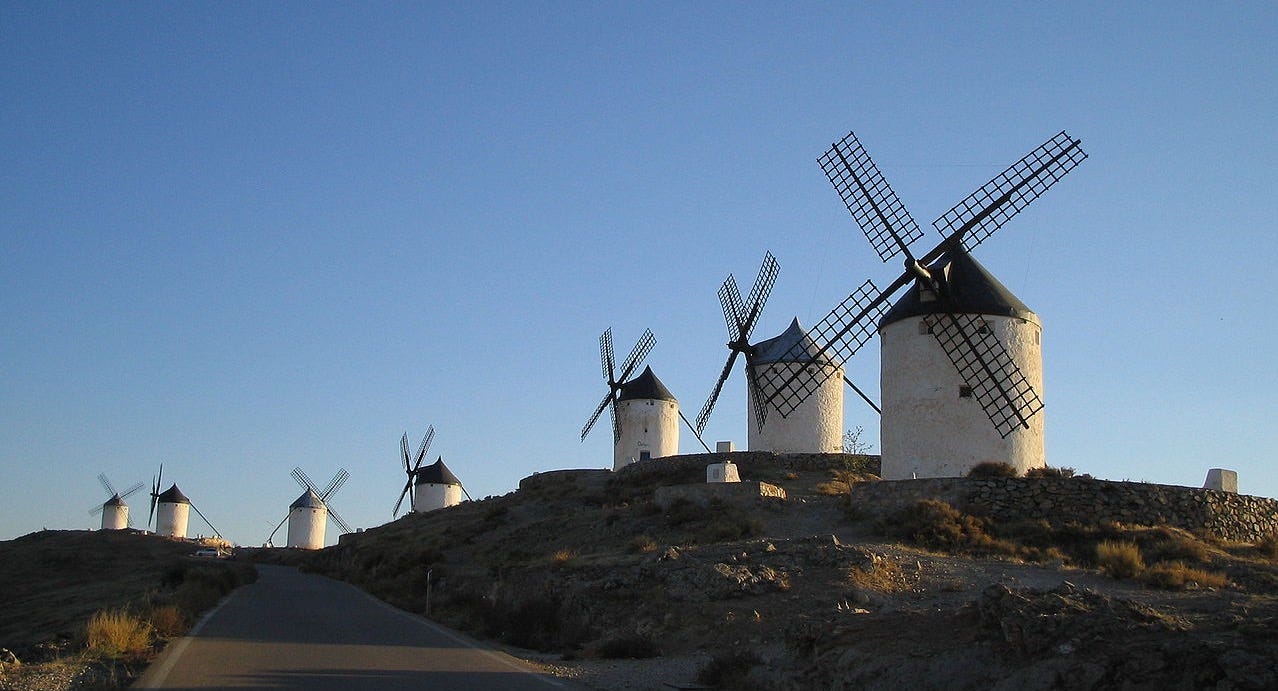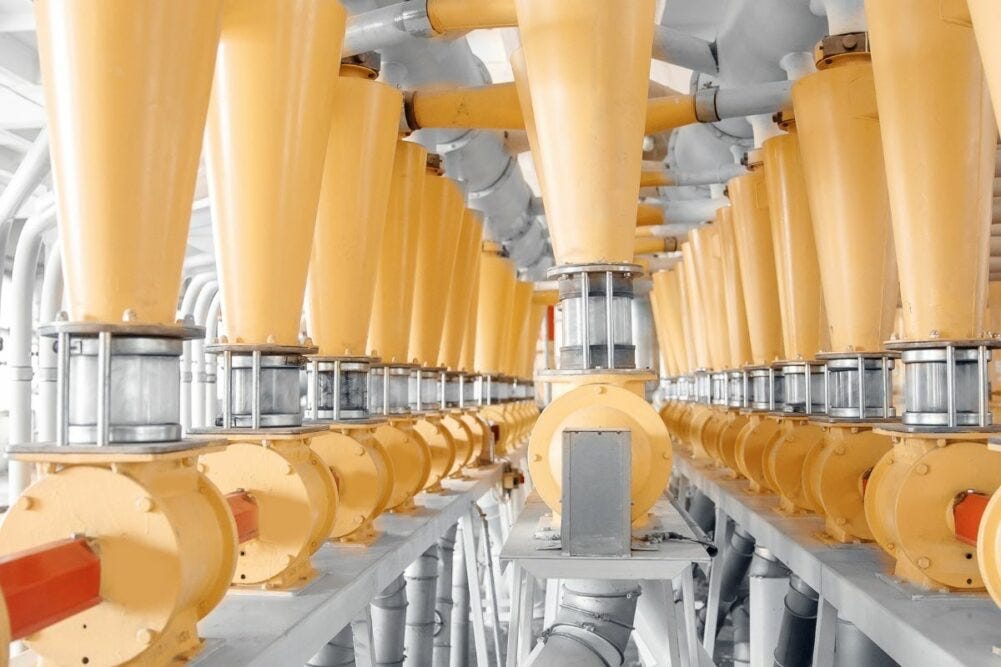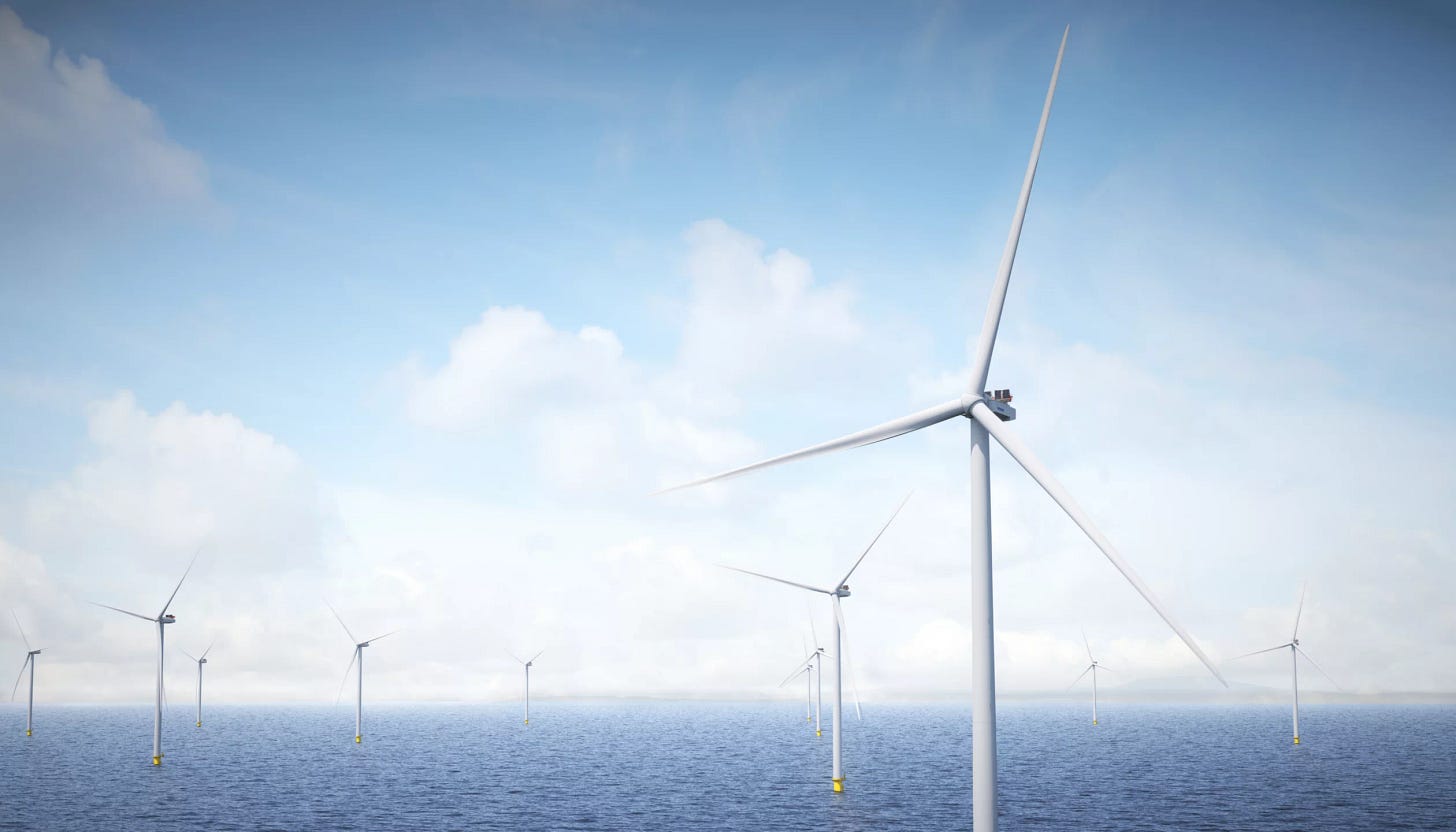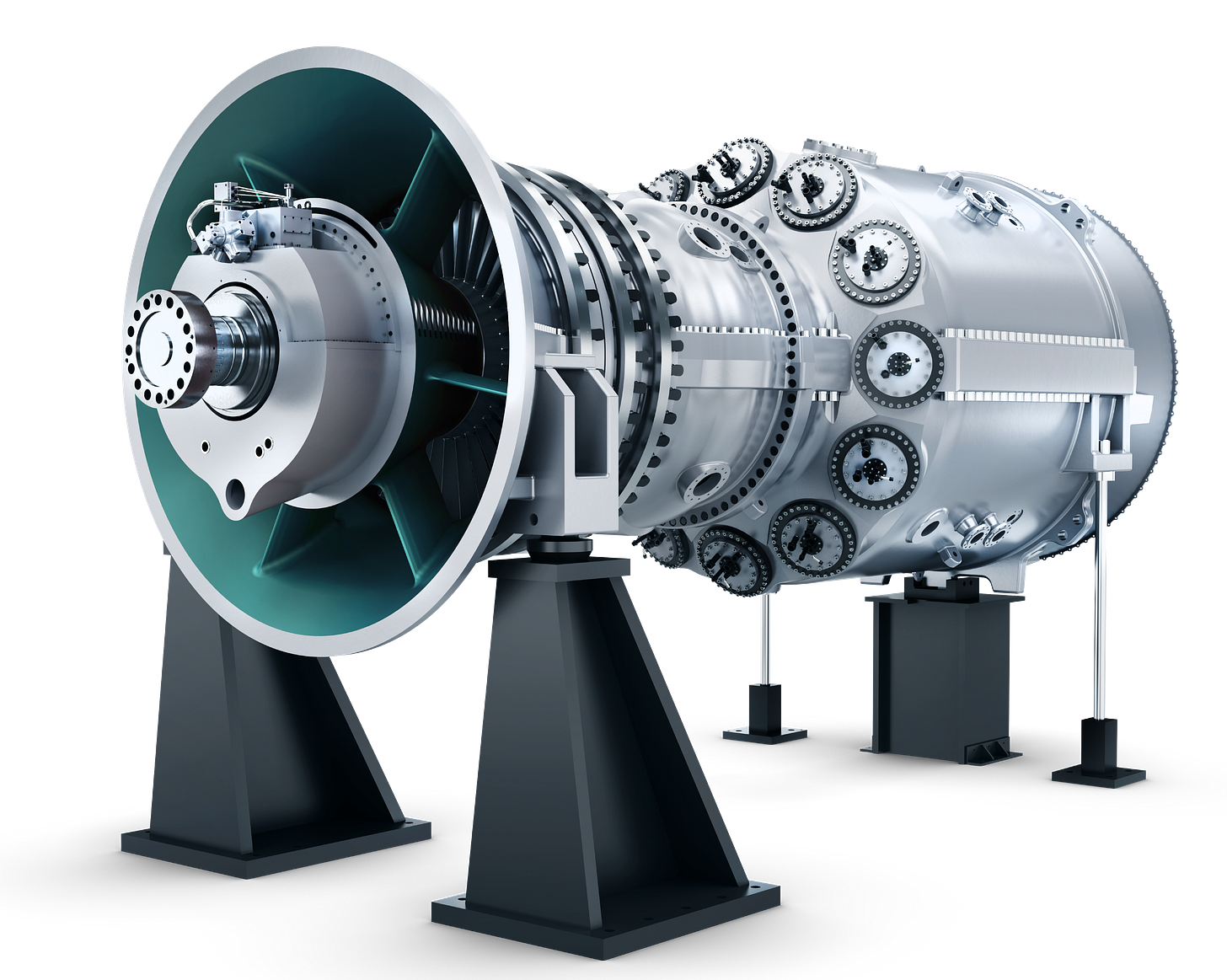Tilting at wind turbines
Some thoughts on expertise, engagement-farming, renewable energy, and nomenclature
Windmills: a guide for pundits
These are windmills; a windmill uses the power of wind to grind grain (or press olives or grapes):
Windmills in Consuegra, Spain. Photo by pavlemadrid on Wikipedia.
They are quaint and picturesque and, other than for tourist photos, they aren’t used to mill grain anymore. That’s done by industrial grinders such as these:
This is a wind turbine farm, or wind farm; it uses the power of wind to generate electric power:
A wind farm of Vestas V236-15.0 MW offshore wind turbines.
If you’re a pundit whose punditry involves punditrizing about energy, learn the difference. Ditto if you’re writing speeches about energy for POTUS.
Expertise, real and on social media
A relatively small number of energy professionals (and energy-adjacent interested people like me) face a barrage of nonsense, created by “experts” who don’t know the basics, amplified by algorithms that maximize engagement and by individuals and organizations with agendas dependent on said nonsense, and taking over the public perceptions with narratives that have little to do with technical and technological realities. Politicos and activists (on both sides) then fight the fictional monsters that these narratives create, like Don Quixote tilting at the windmills.1
As Feynman wrote at the end of his separate appendix to the report on the Challenger disaster, for a successful technology, reality must take precedence over social media engagement, for Nature will not be fooled. (Updated to 2025 language.)
Here’s a way to think about technical stuff (call it X; e.g. one of those industrial grain mills above) and the competence distribution in the population; bar lengths are indicative and ordinal-only:
Technical material is only really known by people who can do something with it. That bottom chasm, that’s the difference between people who say words and people who operate equipment and make calculations. Almost all generalist pundits fall under that line, because learning technical material beyond the shallowest of depths (in many cases, beyond knowing how to spell the words) in different fields every week — as the topic of general attention shifts — is not possible .
Let’s illustrate.
About those turbines…
Watching a Sal Mercogliano video,2 I learned that around 30 GW of planned offshore wind capacity (that’s nameplate capacity; it’ll be important later) is being put on hold. Presumably that’s what the punditrage got so excited about (positively and negatively).
Politics! Words! Soundbites! Windmills, erm… turbines!
Here’s what a knowledgeable person thinks of those news: 30 GW nameplate capacity (meaning that when we add all the nominal power of all the turbines in all the farms we get 30 GW) sounds like a lot (it is a lot, to be fair), but how much effective capacity is it? Wind doesn’t always blow at the optimal speed for those turbines, so the actual electricity generated per period is lower than the 30 GW would predict.
To consider alternatives to the just-suspended wind farm plans, we need the capacity factor, which varies a lot for wind: Denmark, taking advantage of the same winds that helped Vikings pillage the Northwest of Europe, gets about 40-45%; California, with only onshore (and smaller) turbines, gets around 26%. Being generous to a fault we’ll use a capacity factor of 35%, which makes those nameplate 30 GW of non-dispatchable, random intermittent power (this will be important later) really 10.5 GW.
To get those non-dispatchable random intermittent 10.5 GW we’d need to install 1200 of the Vestas V236-15 turbines above; buy them, build their foundations, install them on the foundations, connect them to the grid, maintain and repair them, and eventually decommission them — all in the middle of the ocean. What’s the alternative?
Meet another turbine, a gas turbine. Technically, a combined-cycle gas generator and power turbine, or CCGT: a jet engine that uses an extra turbine [assembly] to drive a generator with the kinetic energy of the jet exhaust, then a heat exchanger to recover heat energy and a steam turbine to run a generator. Behold, the Siemens SGT6-9000HL:
With all the extras (the thermal cycle part is not in that photo), it’s the size of a cottage. Nine of them replace the 1200 Vestas wind turbines.3 And they are dispatchable: the operator decides when to switch them on and off, not the whims of Aeolus. (See, engineers can have culture too.)
So, those 30 GW of wind capacity may not be that critical. IMSNHO, of course.
This, by the by, is not expertise; this is 8th-grade shop-class material about electricity. But even that level of knowledge is beyond the ken of many online pundits, including a person who self-describes as a “philosopher and energy expert,” but has difficulty remembering when to use MWh and MW (these are different units for different things), let alone do basic calculations like the arithmetic above. But they get a lot of visibility to discuss “the moral case” and “the political implications” of fossil fuels.4
Just not, y’know, the science or engineering or economics.
This was unclear in the original version of this post so I rewrote part of the paragraph; the original incorrectly equated the experts with Don Quixote, whereas they are more like Sancho Panza. These are the dangers of writing without an editor and publishing without advance readers.
Sal Mercogliano has a YouTube channel that covers matters related to shipping; the video in question:
I recommend this channel for people interested in shipping and logistics; SM doesn’t just cover current events, he also has some introductory videos and links to relevant books (some online and free — legally free).
Each gas turbine running in combined-cycle has a power rating of 1,300 MWe (yes, the same as two 650 MWe CANDU nuclear reactors; the e is for electric, because all these things have large thermal losses), with capacity factors in the high 90%s. So we need nine: 10.5/(1.3*0.9) = 8.97.
Gas turbines running in combined-cycle mode have ~ 60% chemical-to-electric efficiency; to generate 10.5 GWe we need a flow of ~ 315 kg/s of methane (= 10.5 [GW = 1000 MJ/s] / ( 55.5 [MJ/kg specific energy of methane] * 0.6 [efficiency])), which assuming stoichiometric combustion leads to ~ 870 kg/s of CO2 emissions (one methane CH4, molecular mass 16, yields one CO2, molecular mass 44; so mass(CO2) = 44/16 mass(CH4)).
That’s just a rough estimate of the operational CO2, not including all the construction, maintenance, etc. My contention is that if someone wants to talk about the “moral case” for fossil fuels, that someone should at least be able to do these back-of the envelope [spreadsheet, really] simple calculations. (This is still not expertise, it’s middle-school physics and chemistry. At least it was where 🇵🇹 and when 🦕 I went through it.)







